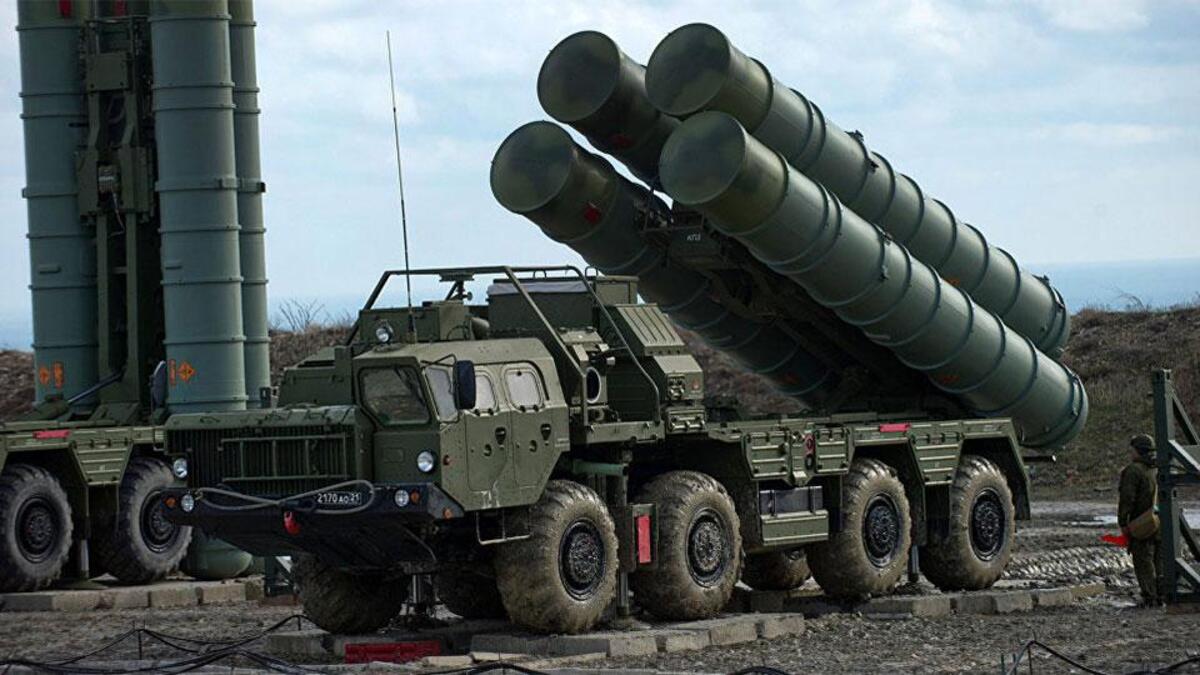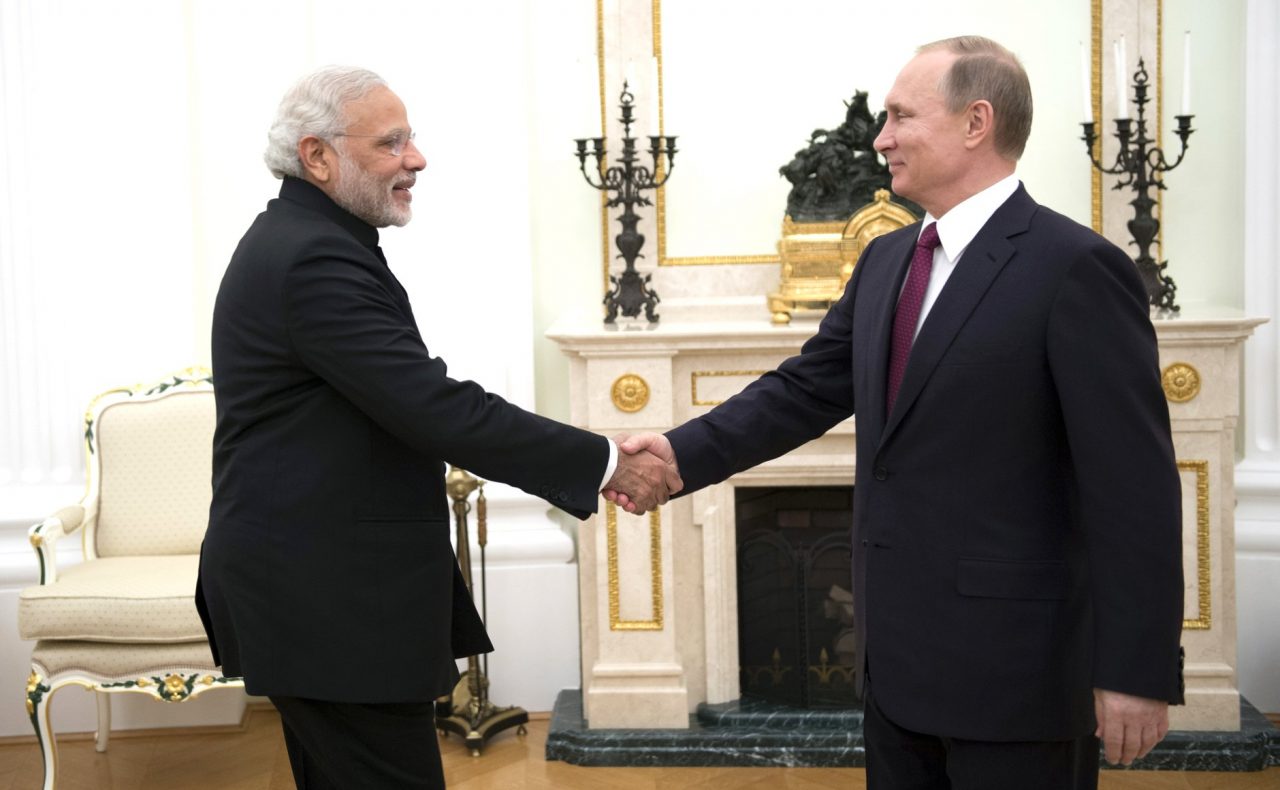Washington is looking to deepen security ties with New Delhi through a military aid package to end India’s dependence on Russian weapons. Reports suggest that the package under consideration would include military financing of $500 million, making India one of the largest recipients of such aid after Israel and Egypt.
The US intends to make India a long-term, reliable security partner and pull New Delhi away from the Russian ‘clutches’.
India was the largest arms importer between 2017 and 2021, accounting for 11% of total world arms imports, according to the Stockholm International Peace Research Institute’s (SIPRI) report. The majority of arms were bought from Russia.
While India has been reducing its dependence on Russian weapons, its proportion of Russian arms shipments has decreased from 69% between 2012 and 2016 to 46% between 2017 and 2021, and India has increased defense imports from France, the US, and Israel, besides boosting its indigenous defense production.

However, Russia remains the largest arms supplier to India, and many western experts have admitted that New Delhi has been reluctant to criticize Moscow for its invasion of Ukraine because of its over-dependence on Russian arms.
Washington has realized that India has deep military ties with Russia dating back to the Soviet days. The US is now aggressively attempting to cut Delhi’s reliance on Russian weapons and magnetize the ‘swing state‘ towards Washington as it earlier did with Pakistan.
America’s Fight Against Communism
Following the end of British colonial rule in 1947 and its subsequent partition into India and Pakistan, the US, under the Truman administration, tried to have a constructive bilateral relationship with both the countries.
Washington had hoped that the region would remain under British influence, and the newly-born states would therefore be aligned with the West, resistant to domestic and external Communist threats.
However, India, under the Nehru administration, adopted a policy of non-alignment to avoid getting caught in the crossfires of the ‘Cold War’ between the two superpowers at the time, the US and USSR.
“We propose, as far as possible, to keep away from the power politics of groups, aligned against one another, which have led in the past to world wars and which may again lead to disasters on an even vaster scale,” Nehru said in March 1947.

Meanwhile, Pakistan decided to seize the opportunity to align itself with the US against the Soviet Union, which led analysts in Washington to view the country as a ‘potential valuable strategic asset’ located at the crossroads of the Middle East and South Asia, and relatively close to the Soviet Union that Americans simply could not afford to alienate.
The US saw the opportunity to use the Karachi-Lahore area as a base for air operations against the Soviet Union and staging forces engaged in the defense or recapture of Middle Eastern oil areas, where the countries were not capable of fending off the potential Soviet invasion.
US-Pakistan Defense Pact
In May 1954, the US and Pakistan entered into a bilateral defense agreement, as part of which the US agreed to provide military equipment and training to the Pakistan Army.
Pakistan also became part of US-led alliances such as the South East Asian Treaty Organization (SEATO) and the Central Treaty Organization (CENTO). CENTO provided Islamabad with an opportunity to become closer to other Muslim countries such as Iran and Turkey while allowing America to promote its interest in the Middle East.
By 1957, the US had provided Pakistan with a wide range of military hardware, including Patton tanks, artillery helicopters, bombers, high-level long-distance radars, frigates, and a Ghazi submarine. The US also supported the development of nuclear research infrastructure in the country.

In return, Pakistan granted the US extra-territorial rights to set up a secret intelligence base under the guise of a ‘communication center’ at Badaber, near Peshawar, which also served as the base for high-level U-2 spy planes to conduct surveillance flights over the Soviet Union. The Bedaber base in Peshawar allowed the US to follow the Soviet and Chinese activities.
US Pushed India Into The Soviet Camp
However, both the countries differed in their objectives for the alliance, as Washington was strictly interested in fighting Communism, whereas Pakistan was diverting the American economic and military assistance to improve its military capabilities vis-a-vis India.
This led New Delhi to view the American patronage toward Pakistan as threatening and suggestive of a pro-Pakistan bias.
Washington had no animosity toward New Delhi, and before signing the agreement with Pakistan, then US President Eisenhower had promised India that its request for military assistance would be considered sympathetically if India needed such assistance.
The US came through on that promise, as it became India’s top supplier of aid in the 1950s and rushed to support India during the 1962 China-India border war.
Pakistan was disappointed that the US did not appreciate its concerns relating to India and Pakistani officials thought that they were being taken for granted. Therefore, in 1959, a cooperation agreement was signed between the two countries, which required the US to assist Pakistan if it became the victim of aggression from any other country.
In addition, in the early 1970s, the US pursued an opening with China to leverage the growing tensions between Moscow and Beijing. All this led New Delhi to seek patronage from the Soviet Union to keep the regional balance of power from shifting in favor of its major rivals: Pakistan and China.

India-Russia Defense Cooperation
So, India and the Soviet Union signed a defense pact in August 1971 amid tensions with Pakistan due to the worsening refugee crisis along India’s border with the then East Pakistan.
The pact provided India with protection against any possible intervention by the US, Britain, or China in support of Pakistan if and when the conflict precipitated.

The US and Britain indeed sent their navies to the Bay of Bengal and the Arabian Sea, respectively, during the third Indo-Pakistan war, which started in December 1971, and in response to this, the Soviet Union dispatched its naval fleet comprising a good number of nuclear-armed ships and submarines, which allowed India to liberate Bangladesh successfully.
More importantly, the pact made way for the Soviet Union to become India’s exclusive defense supplier, and the US, which was suspicious of Indo-Soviet friendship, refused to sell India sophisticated weapons and continued to strengthen Pakistan’s military.
The US even refused any kind of defense-related cooperation with India, such as joint ventures to enable domestic manufacturing of arms. The Soviet Union was more accommodating to India’s military interests and soon became the country’s primary arms supplier, and this continued with Russia after USSR disintegrated.
That said, the relations between the US and India began improving in the 2000s, particularly after the George W. Bush administration sought to cultivate India as a potential strategic partner and reached a special nuclear deal with India in July 2005.
In the last 22 years, US defense sales to India have reached up to $20 billion, with more purchases under consideration, while India has reduced its arms import from Russia to a great extent.
- Written by Tanmay Kadam/EurAsian Times Desk
- Contact the author at etdesk@eurasiantimes.com
- Follow EurAsian Times on Google News




